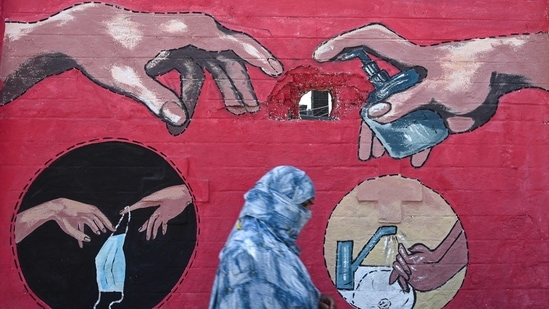Covid-19: What you need to know today
Delhi was short of tests, medicines, oxygen, hospital beds, and ventilators. People wanted help with remdesivir and plasma. Both were being prescribed indiscriminately by doctors.
I’ve mostly worked from office since March 2020, apart from a few weeks last April (and, of course, apart from Wednesdays when I work on the best weekend section across newspapers in India, HT Wknd, and prefer to do so from home). I kept the AC off in my room in the office; wore two masks; used a sanitiser as often as I could (I used to do this even before the pandemic, especially after shaking hands, even if the person with whom I’d shaken hands was still in the room); avoided crowded conference rooms (even in January and February when everyone else seemed to think they were fine); and showered the minute I returned home. I must have taken an RT-PCR test more than a few times — once to travel, another time to meet with and interview the finance minister, and the rest of the times to make sure I was not infected after contact with someone who went on to test Covid-positive. I was careful. I knew the science.

But I also knew that the probability was always against me.
On the night of April 17, a Saturday, I was working in the study when I realised I’d left something I needed in the bedroom upstairs — and I found that I just couldn’t walk up the stairs.
The next morning, I woke up with fever, and isolated immediately. But I could smell, my throat was fine, and I wasn’t experiencing any difficulty breathing.
Monday was worse, but I managed to get tested — a technician came home and took a sample. It was a bad time to fall ill. Maybe it was because my fever was rising, but I remember that as the day when things started going south in Delhi and some other parts of India. Through the day, I received calls from people seeking help. We (it was mostly my colleagues) managed to help some; for others, we could do nothing. The calls continued through the night as my fever continued to rise (despite double strength Tylenol). When I last checked it just before dropping off, it was close to 103 degrees.
On Tuesday, when I woke up, I realised I’d lost my sense of smell. By then, I’d acquired a cough (a wet one, strangely enough, but this is not entirely unknown among Covid patients). The results, which came in a few hours later, confirmed that I was indeed Covid-positive. A colleague put me in touch with a doctor for a virtual consultation. He recommended a blood test (to check base levels, so that a subsequent test could highlight so-called inflammatory markers that would guide the course of treatment). I had anticipated this and already booked a test with a lab (they assured me a phlebotomist would come by later that evening to draw a sample).
The doctor also sent me a prescription on WhatsApp; the company doctor reviewed the prescription and said he’d feel more comfortable if I took a dose of steroids in addition. The medicines were not available in my neighbourhood, but another colleague found them for me (in Faridabad). Eventually, I chose to have favipiravir (a drug found effective in China in early 2020, but which subsequent tests found largely ineffective; I decided to take it because it is an antiviral that is believed to act against a wide variety of RNA viruses, and the one that causes Covid-19 is an RNA virus), the antibiotics (I did have a very bad throat, the kind for which my GP loves prescribing antibiotics, although I know this isn’t good practice), the fever medication, and the vitamins (which couldn’t hurt). I skipped the ivermectin (I know this doesn’t work at all) and the steroids.
By Wednesday, my fever was below 100 and my throat felt a little better. Calls from people seeking help — the utter sense of despair from hearing grown men cry on the phone, amplified by one’s own inability to help — continued through the day; Delhi was short of tests, medicines, oxygen, hospital beds, and ventilators. People wanted help with remdesivir and plasma. Both were being prescribed indiscriminately by doctors. The first works only in early stages of infection , and on people who need supplemental oxygen (not mechanical ventilation). The second doesn’t work, usually — it is next to impossible to find plasma with the required concentration of antibodies. Oxygen, of course, helped, but there wasn’t enough of it to be had in Delhi. The few people I’d helped find hospital beds, for themselves and theirs, sent back messages: some were better, others had passed on to the great beyond.
I was lucky. The fact that I had taken a first dose of the vaccine, I believe, helped me (I cannot take the second dose for at least two months now). I continued to write this column through my brief illness, but I did little else. By Friday, the fever had broken. By Monday, I was back at work (although I was still in isolation in my study).
My blood oxygen level never went below 98 the entire time. The two blood tests I took, a week apart (Day 1 and Day 8), came back with normal and almost identical readings.
Three weeks on, I am almost back to normal, although I am still very tired, and have persistent body ache and joint pain. But I plan to resume running sometime this week.






